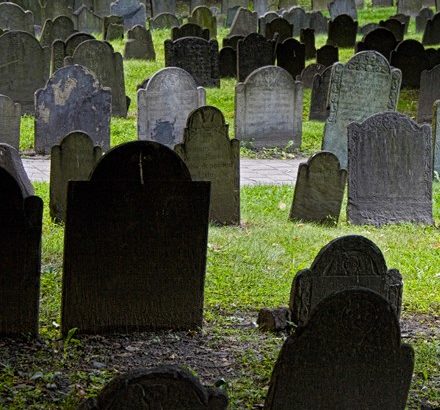(Update on U.S. Health Care: Getting Less for More follow link to read original report)
In our last depressing foray into the alarming statistics that underpin the sorry state of health care in America, we discovered that America has the highest child and infant mortality rate of any high-income, industrialized country in the world, that in 2016 Americans could only hope to live an average of 79.80 years — one of only nine OECD Countries [35 of the world’s most advanced free-market democracies (self-described)] whose citizens do not live into their eighties, that U.S. life expectancy which had been declining  since 2009 actually dropped in 2015 for the first time since 1999. It turns out that mortality rates are rising disproportionately not only among those over 65 but among middle-aged white Americans, particularly women, who are engaging in risky behaviors like drug abuse (now the leading cause of death among the under-50 crowd), alcoholism and suicide —causes which some experts term “deaths of despair.”
since 2009 actually dropped in 2015 for the first time since 1999. It turns out that mortality rates are rising disproportionately not only among those over 65 but among middle-aged white Americans, particularly women, who are engaging in risky behaviors like drug abuse (now the leading cause of death among the under-50 crowd), alcoholism and suicide —causes which some experts term “deaths of despair.”
Government policies have a lot to do with Americans’ loss of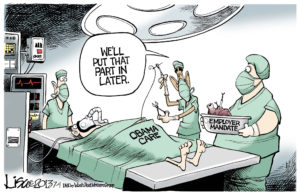 hope and optimism. The passage of the 2011 health care law (Obamacare) left the worst excesses of the U.S. health care system intact —yearly premium increases, unaffordable and rising co-pays and deductibles, out-of-sight RX drug prices with the result that fewer Americans bother to fill their prescriptions, undergo life-saving operations, or adopt life style habits that would extend their lives. Bottom line: the great healthcare reform boondoggle created an expensive, inefficient, inordinately complex system that vastly underserves poorer communities and hands outsized rewards to the owners of the system.
hope and optimism. The passage of the 2011 health care law (Obamacare) left the worst excesses of the U.S. health care system intact —yearly premium increases, unaffordable and rising co-pays and deductibles, out-of-sight RX drug prices with the result that fewer Americans bother to fill their prescriptions, undergo life-saving operations, or adopt life style habits that would extend their lives. Bottom line: the great healthcare reform boondoggle created an expensive, inefficient, inordinately complex system that vastly underserves poorer communities and hands outsized rewards to the owners of the system.
 Lest you think all is gloom and dome — take heart there is a silver lining to this particular cloud. Guess who benefits? If you guessed the usual suspects, America’s oligarchy, you guessed right. As more Americans die at a younger age, major corporations are scaling back their projections of future hits to their pension funds. So certain are they that a major share of their workforce won’t be around at retirement time or if they are, won’t stick around long enough to collect the majority of their pensions, for the last two years, twelve American corporations, including Verizon and General Motors, have reduced their estimates of future pension liabilities by a combined $9.7 billion. As Bloomberg ever so coyly put it “revised assumptions indicating shortened longevity” have become a staple of corporate pension projections. Lockheed Martin subtracted $1.6 billion from its pension projections for 2015-2016 and announced the “good news” to shareholders via its annual report. Clearly the decline in life expectancy among potential pensioners is a home run for CEOs who will profit from reduced pension costs and shareholders who can expect increased profits. This development is especially good news for the corporations (most of
Lest you think all is gloom and dome — take heart there is a silver lining to this particular cloud. Guess who benefits? If you guessed the usual suspects, America’s oligarchy, you guessed right. As more Americans die at a younger age, major corporations are scaling back their projections of future hits to their pension funds. So certain are they that a major share of their workforce won’t be around at retirement time or if they are, won’t stick around long enough to collect the majority of their pensions, for the last two years, twelve American corporations, including Verizon and General Motors, have reduced their estimates of future pension liabilities by a combined $9.7 billion. As Bloomberg ever so coyly put it “revised assumptions indicating shortened longevity” have become a staple of corporate pension projections. Lockheed Martin subtracted $1.6 billion from its pension projections for 2015-2016 and announced the “good news” to shareholders via its annual report. Clearly the decline in life expectancy among potential pensioners is a home run for CEOs who will profit from reduced pension costs and shareholders who can expect increased profits. This development is especially good news for the corporations (most of 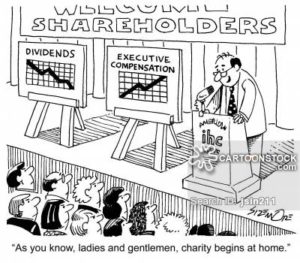 them) who habitually dip into worker pension funds to cover shortfalls in earnings, munificent bonuses to top management and increasing levels of stock buybacks to enrich shareholders. With the decrease in life expectancy among the general population, pension shortfalls are no longer the looming cloud on the horizon of endless profits for corporate America.
them) who habitually dip into worker pension funds to cover shortfalls in earnings, munificent bonuses to top management and increasing levels of stock buybacks to enrich shareholders. With the decrease in life expectancy among the general population, pension shortfalls are no longer the looming cloud on the horizon of endless profits for corporate America.
For once U.S. corporations are not the sole beneficiaries of this increasing death spiral. Slowing gains in life expectancy provide “much-needed” pension relief to neighboring Canadian corporations and “across the pond” in England. The causes are remarkably similar— fall-out from the 2008 recession and government-mandated austerity cuts to social programs. As in the U.S., the actuaries in England are sharpening their pencils and shaving ₤310 billion off private sector obligations (15% of total pension liabilities). Corporate execs might be hoisting the champagne glasses, but others are not so sanguine. Here’s the troubling evaluation from the UK Institute and Faculty of Actuaries “these signs [of decreasing life expectancy] should be taken as warnings that worsened health care, behavior, and environment [examples: opioid abuse, increasing BMIs (body mass index), pollution] can reverse decades of success in health and longevity.”
 Back in the U.S., a demographer at the Urban Institute weighed in on the extraordinary turn in life expectancy among citizens of developing countries. Absent war or epidemic (the influenza pandemic of 1918-1919 that killed an estimated 20 million people worldwide), history provides us with no similar pattern of declining or worsening life expectancy amid plenty. “It [failure of life expectancies to improve] really is a reflection of a lot of underlying conditions of life… [and should be] as urgent a national issue as any other that’s on our national agenda.”
Back in the U.S., a demographer at the Urban Institute weighed in on the extraordinary turn in life expectancy among citizens of developing countries. Absent war or epidemic (the influenza pandemic of 1918-1919 that killed an estimated 20 million people worldwide), history provides us with no similar pattern of declining or worsening life expectancy amid plenty. “It [failure of life expectancies to improve] really is a reflection of a lot of underlying conditions of life… [and should be] as urgent a national issue as any other that’s on our national agenda.”
In case you think the private sector is alone in striking up the band as they calculate their savings from an excess of premature deaths, here’s the chief actuary of the Social Security Administration — “[the most recent data available] show continued mortality reductions that are generally smaller [bureaucrat-speak for more Americans are dying sooner] than those projected.” As private pension funds get renewed life from the early deaths of their pensioners, so too will Social Security beneficiaries profit from the untimely deaths of their fellow-beneficiaries.
In an era where increases in mortality equal increases in profits for 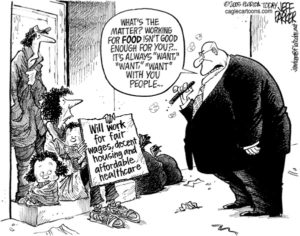 U.S. fat cat corporations, the last half of the twentieth and first decade and a half of the twenty-first century are a demographer’s nightmare and a CEO’s dream. Since 1950, Americans over 50 have experienced declining death rates on the order of about 1% per year. In the go-go 2000s (2000-2009) the death rate decline almost doubled to 1.5-2%. Between 2010-2014, death rate improvement skidded down to ½% per year. Why the precipitous decline? Could it be that the non-recovery from the economic crisis of 2007-2008, the widening gap between the wealthy and the rest of us, the explosion in student debt, the exorbitant hike in prescription drug prices, the cries for austerity amid a perpetual war machine that charges trillions of dollars of war
U.S. fat cat corporations, the last half of the twentieth and first decade and a half of the twenty-first century are a demographer’s nightmare and a CEO’s dream. Since 1950, Americans over 50 have experienced declining death rates on the order of about 1% per year. In the go-go 2000s (2000-2009) the death rate decline almost doubled to 1.5-2%. Between 2010-2014, death rate improvement skidded down to ½% per year. Why the precipitous decline? Could it be that the non-recovery from the economic crisis of 2007-2008, the widening gap between the wealthy and the rest of us, the explosion in student debt, the exorbitant hike in prescription drug prices, the cries for austerity amid a perpetual war machine that charges trillions of dollars of war  expenses to the national debt (around $20 trillion and rising), and the post-recession income gains—virtually all of which (95%) have gone to the 1%— have been so physically and psychologically demoralizing to a huge chunk of the population it has literally cost them their lives? Look around you —the spree killings, road rage incidents resulting in death, alcohol abuse, adolescent hypertension, diets rife with salt fat and carbohydrates, upsurge in diabetes among young and old — Americans either have forgotten how to preserve their lives or don’t see it as a priority.
expenses to the national debt (around $20 trillion and rising), and the post-recession income gains—virtually all of which (95%) have gone to the 1%— have been so physically and psychologically demoralizing to a huge chunk of the population it has literally cost them their lives? Look around you —the spree killings, road rage incidents resulting in death, alcohol abuse, adolescent hypertension, diets rife with salt fat and carbohydrates, upsurge in diabetes among young and old — Americans either have forgotten how to preserve their lives or don’t see it as a priority.
It’s time to rethink the American bucket list. Time to commit ourselves to healthier lives, righting the balance between the rich and the rest of us, ending perpetual war, guaranteeing everyone a living wage, instituting a fair health care system that lets everybody in, stopping the incarceration of millions of our people, and taking a long, hard, critical look at the fall-out from free-market economies.
Everyone agrees that the twentieth century was the American century. Seventeen years after the twentieth century faded from view, one thing seems clear —Unless and until the U.S. get its act together and fixes what’s wrong at home before it starts remaking the rest of the world, the election of President Trump may well be a distant early warning of worse troubles to come. Chalk it up to fate’s morbid sense of humor.
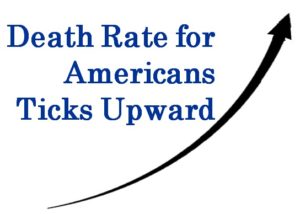
Today’s article is an update on U.S. Health Care: Getting Less for More follow link to read original report.
835 total views, 1 views today
